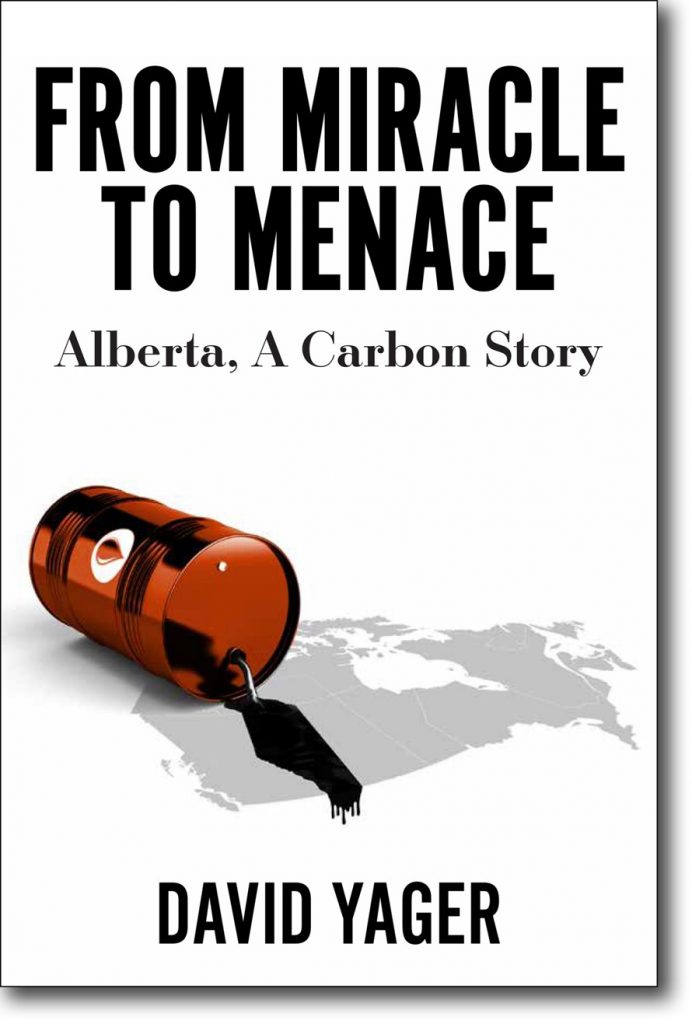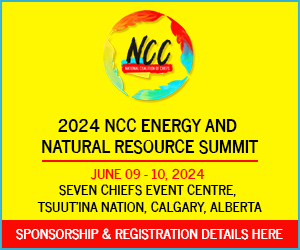By David Yager
May 4, 2020
May 4, 2020
Since crude prices began to crumble in early March, the only positive event for the battered oilpatch has been Planet of the Humans, a documentary made by American environmentalist Jeff Gibbs and executive producer Michael Moore.
And it isn’t particularly good news either!
Released free on YouTube on Earth Day 2020, April 21, it coincided with the 50th anniversary of the creation of a special day during which people are expected to reflect on how terribly the human species has treated the planet we inhabit.
It’s not intuitive that oil people would seek out Michael Moore for anything. Moore has made a career out of trashing capitalism and US conservative politics. For over 30 years he has produced multiple documentaries attacking almost everything that makes money and those elected to supervise the process.
Moore started his film career in 1989 with Roger and Me, a video about the appalling treatment his hometown of Flint, Michigan had received at the hands of General Motors (the CEO at the time was Roger Smith). GM had shuttered its legacy operations in Flint and relocated to Mexico because it was more profitable.
Since then Moore produced many more films highlighting what is wrong with America. Notable titles include Bowling for Columbine (guns and violence), Fahrenheit 9/11 (links between President George W. Bush and the family of Osama bin Laden before the September 11, 2001 terrorist attacks), Sicko (what’s wrong with the American health care system), and Capitalism, A Love Story (the greed-driven roots of the 2008/09 financial crisis and the hope for change under Barrack Obama).
Moore also produced a real movie in 1995 with known actors. Titled Canadian Bacon, it featured Alan Alda as the US president, Kevin Pollack as his senior strategist and John Candy as a beer-loving, gun-toting American patriot. To boost his sagging popularity, Alda declared Canada a menace to America, part of Moore’s belief that you can’t beat a good war to attract US voters. Candy buys in and crosses the border near Niagara Falls with his buddies to dispense justice. After stealing a snowplow, Candy and his gang head for downtown Toronto where a deadly weapon aimed at the US is planted in the CN Tower.
It’s funny, particularly when the police they encounter are stereotypically Canadian: polite and cooperative to a fault. Toronto is that way my American friends. Please drive carefully.
In Planet of the Humans, Gibbs and Moore focus their attention on the renewable energy industry – wind, solar and biomass – long touted as a viable solution for climate change.
The target is not only the energy sources but the people, organizations, politics and capital providers behind them, hereinafter referred to as “big green”. I’ll call fossil fuels – coal, oil and natural gas and the people and companies that produce them – “big oil”.
Starting in the late 1980s big green was looking for its next crusade and concluded/alleged/warned that global warming was real and already underway. Global warming was a menace to life on earth and it was caused by big oil. After the oil price spike and gasoline shortages of the 1970s, big oil had no friends making it an easy target.
So began a thirty-year crusade to vilify and ultimately destroy big oil, ostensibly to save the planet. With fossil fuels declared bad, all other forms of energy were by default good. Politicians, realizing where the votes were gathering, began allocating money. Renewable energy was born through solar, wind, and biomass.
Big oil has long questioned the science, but not the way you think. The issue is not so much the impact of emissions on the climate. That ship has sailed. But people in the industry still question the usefulness of these renewables as practical and economically viable substitutes for fossil fuels.
Because they simply do not work as advertised. They are not carbon-free, they are not reliable, they remain very limited for transportation, and they still need taxpayer or legislated consumer support. Like electricity line charges in Alberta where we pay fixed power delivery charges even when we don’t use any.
While researching my book From Miracle to Menace – Alberta, A Carbon Story, I explored the political and economic forces behind climate change. In a world rife with problems including nuclear annihilation, war, oppression, poverty, starvation and disease, how did the weather get to the top of the list?
It was a combination of fear, politics and human nature. The western world became so wealthy and complacent that people could now worry about things 20 years into the future instead of where the next meal was coming from tomorrow. Preying on the mental and physical fragility of human mortality, the conditions were ripe for big green to make big inroads.
You know the rest. While the examples of big green’s outrageous claims and the often peculiar and expensive responses by governments are legion, here are my two favorites from the book.
In 2005 the US passed legislation adopting biofuels, turning plants into motor fuel. For the US it was corn but tropical countries went with palm trees. America produced 25% of the world’s corn. Forests were razed, agricultural land was re-purposed and ethanol plants sprung up all over the place.
But within five years the price of food was rising in the undeveloped world where people could least afford to pay more. Some writers linked Bush’s biofuel program to the Arab Spring, the populist uprisings that challenged governments in Tunisia, Libya, Egypt, Yemen, Syria and Bahrain. Other Middle Eastern and African countries endured mass demonstrations. A major cause was continued poverty made worse because food had become increasingly unaffordable.
But middle-America’s corn growers were really happy and US politicians were rewarded for taking visible and necessary steps to save the planet. At least it appeared that way.
At the same time the Liberal Government of Ontario decided to show mankind how fighting climate change should really be done. This eventually included dispensing $14,000 cash grants to the wealthiest people in the province to buy a $120,000 Tesla that couldn’t make it from Toronto to Ottawa on a single battery charge. This was part of a massive experiment to phase out coal power generation and replace it with an extremely expensive commitment to wind and solar that was going to save lives and reinvent the economy.
It was a colossal financial disaster leaving Ontario today with, directly and indirectly, the highest electricity prices in North America. And global emissions continued to rise.
Planet of the Humans is compelling because for the first time, people supposedly committed to big green created a movie to question its foundations. The producers investigated solar, wind and biomass.
They didn’t have to try very hard to expose the warts. The significance of the movie is not the content. It is the history and credentials of the people who made it.
Solar power events and festivals were backed up by diesel generators. Solar panels, batteries and wind turbines have a finite service life and require significant quantities of fossil fuels for their manufacture and installation. Wind and solar are interruptible thus requiring back-up generation from coal or gas. The exotic minerals for batteries and wind turbine generators are rare and expensive.
Neither work well when needed the most, which is the coldest days of the long Canadian winter.
Electric vehicle sales plunge when government incentives are removed. The power grid can’t support a quick and massive conversion to EVs. Their range is limited. The batteries are heavy and expensive to replace. Distance before recharging is further limited in the winter when the battery powers the heater and in summer when the driver wants air conditioning.
While the costs of wind and solar are declining and they are indeed useful when they work, the mantra by too many that all that is needed for these to replace fossil fuels is stronger political will is tiresome and wrong.
The real eye opener was the growth and depth of biomass which has now, according to the movie, moved into deforestation to keep up with the growing global demand for wood pellets to generate electricity.
Burning garbage, straw or plant waste to generate electricity was a good idea. Plants take carbon dioxide from the atmosphere when growing and burning returns it. It is billed as renewable because plants grow back. Unlike fossil fuels (which are also dead plants but millions of years older), this is advertised as a closed loop for carbon dioxide and is therefore preferable to fossil fuels.
And burning not yet fossilized carbon-based plants also supplies steady base load power, not intermittent. It works in the dark and on calm days. Finally, a renewable energy source that overcomes the obvious shortcomings of wind and solar.
Except that demand for plants is growing faster than they can grow back. The movie alleges this has now caused a rapid increase in deforestation to feed the machine. This segment is the one the oil industry will appreciate the most.
In Canada big oil has been told for years that one of the terrible aspects of the oil sands is the destruction of the boreal forest, a known and valuable carbon sink. Trees are sold to the climate-correct as carbon offsets for airplane flights. When booking a ticket on-line you can purchase a carbon offset officially endorsed by leading lights like the David Suzuki foundation. Your conscience is clear because somewhere, someday, someone will plant trees that will make that flight carbon neutral. Maybe.
Deforestation of places like the Amazon is a crime against the climate. Climate change causes forest fires that make everything worse. One solution routinely touted for climate change is the world should plant a trillion trees to suck out all the CO2 our shameless lifestyle emits into the air.
And now Planet of the Humans reveals that not only is this not working, but the relentless quest for energy is causing even more trees to be cut down that won’t grow back for year
The movie claims that if the US ran exclusively on biomass it would be completely deforested in a year. A bit of research reveals that in the past three decades about 20% of all CO2 emissions have been absorbed by forests. To meet emission reduction targets in Europe, North America is being logged to provide wood pellets because burning biomass earns carbon credits. But net global emissions are going nowhere.
Michael Moore eventually shows his true colors when the movie reveals that big green has attracted big money; that renewables are funded and supported by capitalists, and environmental leaders have turned into capitalists themselves!
Shocking. When the oil industry tries to stay in business for any reason it is immediately accused of a conflict of interest. My research revealed that big green was also horribly conflicted but until this movie it has never been identified as exhibiting the same behavior.
The documentary highlights two of the capitalist bad guys who have managed to brand themselves as committed greenies: Michael Bloomberg and Al Gore.
Before Bloomberg became a crusader for renewable energy and climate risk disclosure in public company reporting, he founded Bloomberg New Energy Finance, essentially a paid subscription tout sheet explaining all the wonderful investment opportunities that the massive transition away from big oil would create.
Many of the figures touting the US$20, $30 or $40 trillion investment opportunities in big green come from BNEF. Not only can you save the planet, but you can make a boatload of money in the process!
Al Gore founded his big green private equity fund Generation Investment Management in 2004, two years before he made his movie An Inconvenient Truth, the global warming alarmist film that won both a Nobel Peace Price and an Oscar in 2007. It had US$21 billion under management when I looked in late 2018. He has been exposed as a knuckle-dragging capitalist opportunist many times in many ways but his legacy soldiers on as the father of the modern global warming crisis.
Planet of the Humans also highlights how the investment management industry uses “greenwashing” to attract funds. The movie shows examples of so-called green funds that actually own big oil stocks and shares in other carbon-intensive industries like mining.
Of course we’re here to help save the world. But we also need to make money. So do you.
The movie ends with sermon about how the real problem with the world is too many people consuming too much of everything. While not explicitly endorsing depopulation like Paul Ehrlich did in his 1968 end-of-mankind classic The Population Bomb (the US government should introduce sterility drugs into drinking water without telling anybody), the movie shifts the blame away from big oil and the shortcomings of big green to big us; that 7.6 billion people is clearly too many.
The world is being destroyed and the big green plan to save you from yourself is disingenuous. Nothing particularly upbeat about the closing message. But for once, fossil fuel producers aren’t entirely to blame.
Despite vigorous attempts by the environmental industry to have the movie censured and removed from public view, it is still free on YouTube. Have a look. Very informative.
David Yager is a Calgary oil service executive, energy policy analyst, writer and author. His 2019 book From Miracle to Menace- Alberta, A Carbon Story is available at www.miracletomenace.ca.
Share This:





 CDN NEWS |
CDN NEWS |  US NEWS
US NEWS 




































COMMENTARY: Activists Suddenly Care About LNG Investors